External Cosmic Influence: Why Is It Not Being Detected?

Every 12,000 and 24,000 years, our planet undergoes external cosmic influence directly affecting the Earth's core. As a result, there's excessive heating of the core and magma, leading to global catastrophes on Earth. What is known about the impact of cosmic influence on the Solar System?
Fact #1. This cosmic influence cyclically enters the Solar System every 12,000 years, with a stronger impact every 24,000 years. This is indicated by geochronological studies of Quaternary deposits and analysis of volcanic ash layers in ice cores1, 2, 3 (Figure 1, 2).
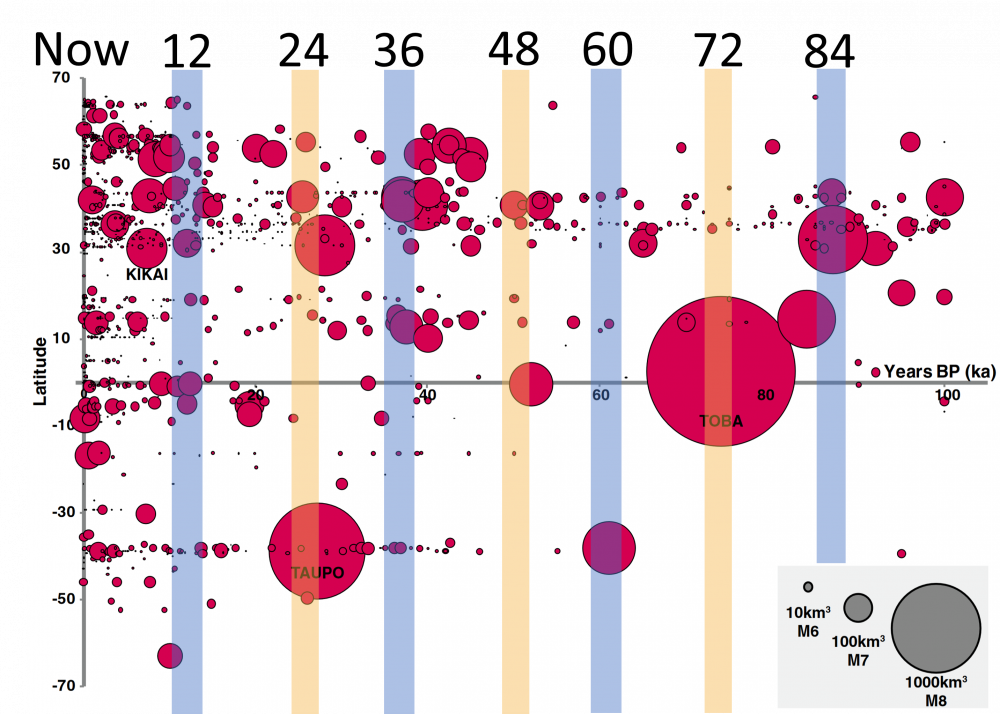
Figure 1. Global eruptions from 2013 AD to 100,000 cal. yr. BP between 70˚N and 70˚S. Stripes mark intervals of approximately every 12,000 years. The size of the circles on the diagram represents the scale of the eruption. Note that larger red circles indicate more catastrophic eruptions, which occurred approximately every 24,000 years.
Source: (а) Brown, S.K., Crosweller, H.S., Sparks, R.S.J. et al. Characterisation of the Quaternary eruption record: analysis of the Large Magnitude Explosive Volcanic Eruptions (LaMEVE) database. J Appl. Volcanol. 3, 5 (2014)
https://doi.org/10.1186/2191-5040-3-5
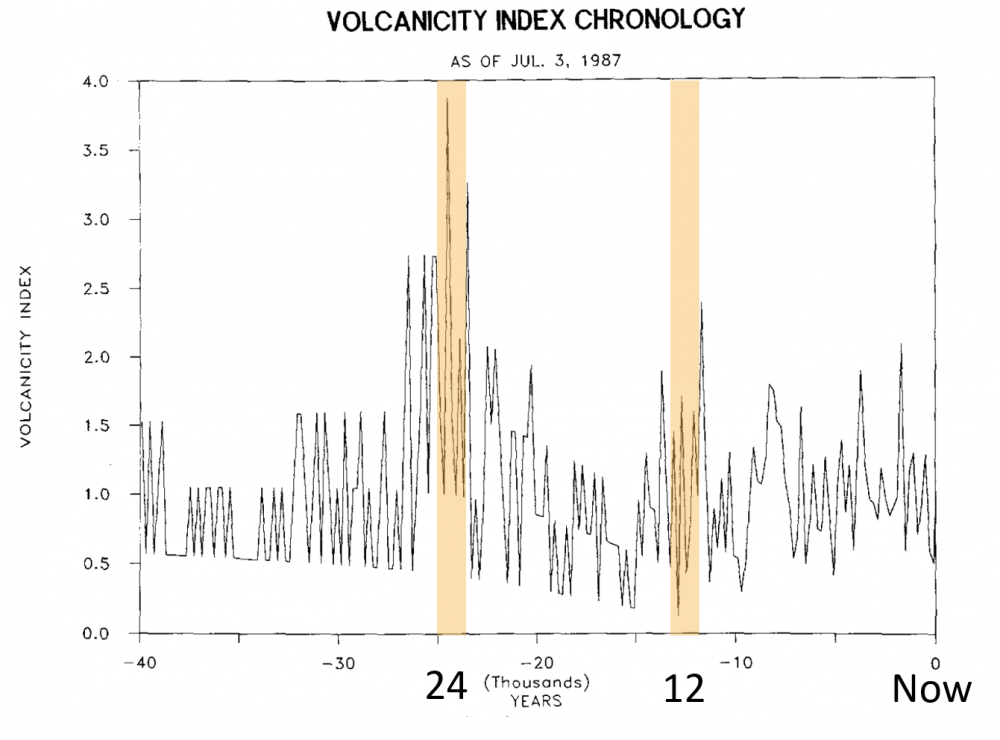
Figure 2. Scale of volcanic activity for the last 40,000 years according to ice core data
The chronology of volcanic eruptions, based on radiocarbon dating of events and expressed as relative deviation.
Source: Bryson, R. A. Late quaternary volcanic modulation of Milankovitch climate forcing. Theoretical and Applied Climatology 39, 115–125 (1989). https://doi.org/10.1007/bf00868307
Fact #2. This cosmic influence affects all planets in the Solar System (for more details, see the section “Changes on other planets of the Solar System”).
Fact #3. External cosmic influence affects only the cores of planets, which reflects both on their magnetic properties (see the section “Changes in the Earth's magnetic field”) and on the positions of the cores within the planets (see the section “Core shift”). This provides grounds to assert that such an influence possesses tremendous energy.
Observing all the listed facts, the question arises: why has this influence not been directly detected yet?
Let's consider sequentially all the known physical cosmic influences on the planet Earth (gravitational, electromagnetic, acoustic, cosmic ray, and dark matter influence), and answer whether they can cause changes in the Earth's core and the cores of other planets cyclically every 12,000 years.
Scenario 1: Gravitational Interaction

Let's assume that as the Solar System travels through space, it encounters a gravitational anomaly caused by other celestial objects. In this case, the trajectories of the Sun itself, all planets, and their moons would be altered, as gravitational interaction affects the planets as a whole. In other words, it would shift the entire planet, not just its core. However, this does not occur.
Some scientists speculate that neighboring planets or gas giants, such as Jupiter, approaching Earth, could influence Earth's core with their gravitational fields, causing it to shift. But it's important to note that recorded changes in our core began not with its displacement, but with changes in its magnetic properties in 19954 (Figure 3). Only after that, in 1998, did the core5 shift occur.

Figure 3. The North Magnetic Pole velocity (km/yr). In 1995, a sharp acceleration in the speed of the North Magnetic Pole drift was recorded, increasing from 9 miles (15 km) per year to 34 miles (55 km) per year, which is 3.5 times faster. The electromagnetic field is generated by the dynamo mechanism in the Earth's core, so it's evident that changes in the magnetic field indicate changes in the core.
Source: NOAA north magnetic pole location data https://www.ngdc.noaa.gov/geomag/data/poles/NP.xy
Displacement of the Earth’s center of mass was already a consequence of processes occurring in the core since 1995. Thus, gravitational influence from large cosmic objects cannot be the cause. Moreover, planetary approaches in the Solar System occur with a periodicity of only a few decades. Therefore, they cannot be the cause of catastrophic changes in the core every 12,000 years.
Scenario 2: Dark Matter

A characteristic of dark matter is that it does not participate in electromagnetic interaction6.
However, it does participate in gravitational interaction, as mentioned above, which means it would affect the movement of stars and planets as a whole, not just their cores. Therefore, external cosmic influence cannot be attributed to dark matter.
Scenario 3: Electromagnetic Interaction. Pulsar

Let's suppose our Solar System encountered powerful electromagnetic radiation, for instance, from a pulsar (Figure 4).

Figure 4. An artistic representation of a pulsar. It emits two beams of radio waves (shown in purple). As a pulsar rotates, these radio waves sweep through space, much like the beams of a lighthouse. Source: NASA.
A pulsar is a rapidly rotating, highly magnetized neutron star born as a result of a supernova explosion, caused by the collapse of massive stars. Pulsars emit radiation in radio wavelengths, visible light, X-ray, or gamma-ray wavelengths, which reach Earth in the form of periodic pulses.
Pulsars emit narrowly focused pulses of various energies. However, along the trajectory of the Solar System in the Galaxy, there are no pulsars with such unique periodicity to have the distance between them of exactly 12,000 years, and with every second pulsar emitting a stronger pulse.
Scenario 4: Electromagnetic Interaction. Supernova Explosion or Solar Flare

Let's assume that as a result of a solar flare, a powerful burst of electromagnetic radiation occurred directed towards the Earth, or an electromagnetic pulse came from a supernova explosion deep in space.
However, let's recall that electromagnetic radiations, such as X-rays and gamma radiation, are mostly absorbed by the atmosphere (see Figure 5).
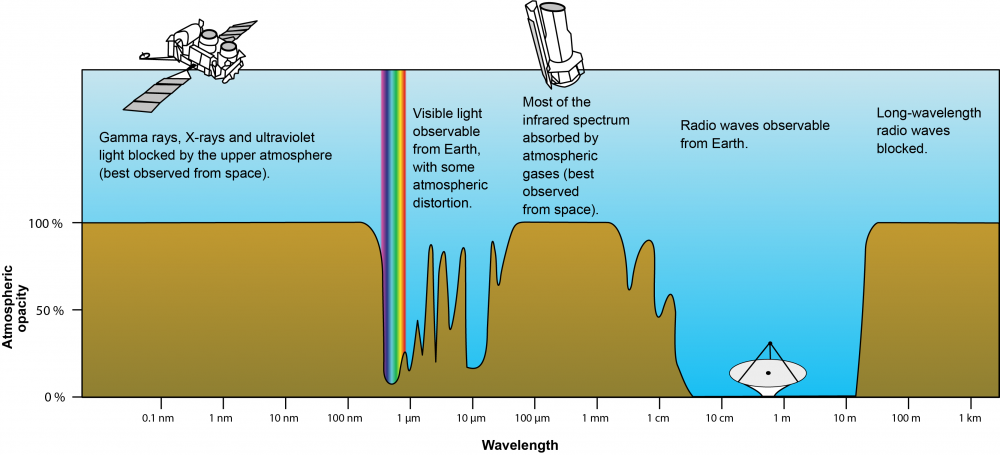
Figure 5. Diagram illustrating the passage of electromagnetic waves through the atmosphere. Author: NASA. Image Source: https://en.wikipedia.org/wiki/Radio_astronomy#/media/File:Atmospheric_electromagnetic_opacity.svg
Only two types of electromagnetic radiation can reach the Earth's surface: visible and radio waves, but they also do not reach the core.
Thus, no electromagnetic waves from an external source could affect the state of the planet's core because they simply do not penetrate deep into the Earth.
Scenario 5: Cosmic Rays

Another external factor affecting the planet from outer space is cosmic rays. These are high-energy particles: protons, atomic nuclei, neutrinos, electrons, which move at speeds close to the speed of light. They can be extragalactic, galactic, and solar.
Many of them, under the influence of Earth's magnetic field, are deflected towards the poles, circumnavigating the Earth.
The remaining portion of charged cosmic ray particles is scattered in the atmosphere, causing the formation of secondary elementary particles (Figure 6). Some of them can reach the Earth's surface, but not the core.
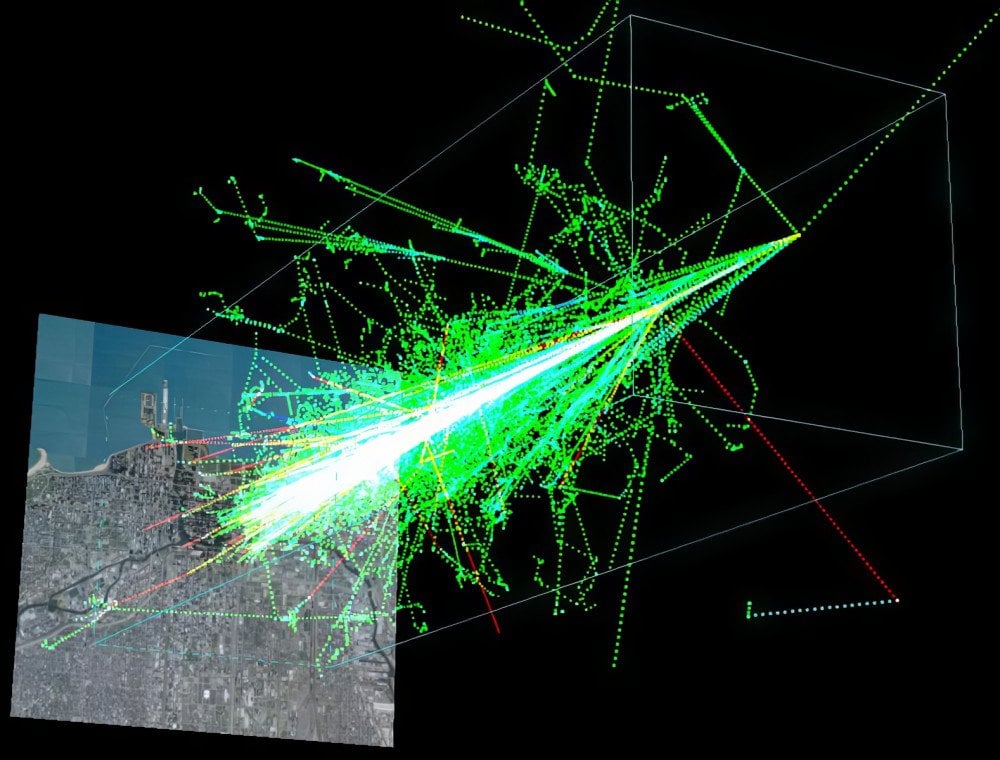
Figure 6. Computer model of a shower of secondary elementary particles generated by a primary 1TeV proton hitting the atmosphere 20 km above the Earth. The coastline is depicted at the bottom to scale.
A shower of secondary subatomic particles (predominantly electrons) forms as a result of multiple cascade reactions in the Earth's atmosphere. The progenitor of the shower is a primary particle from space that interacts with the nuclei of air atoms upon entering the atmosphere.
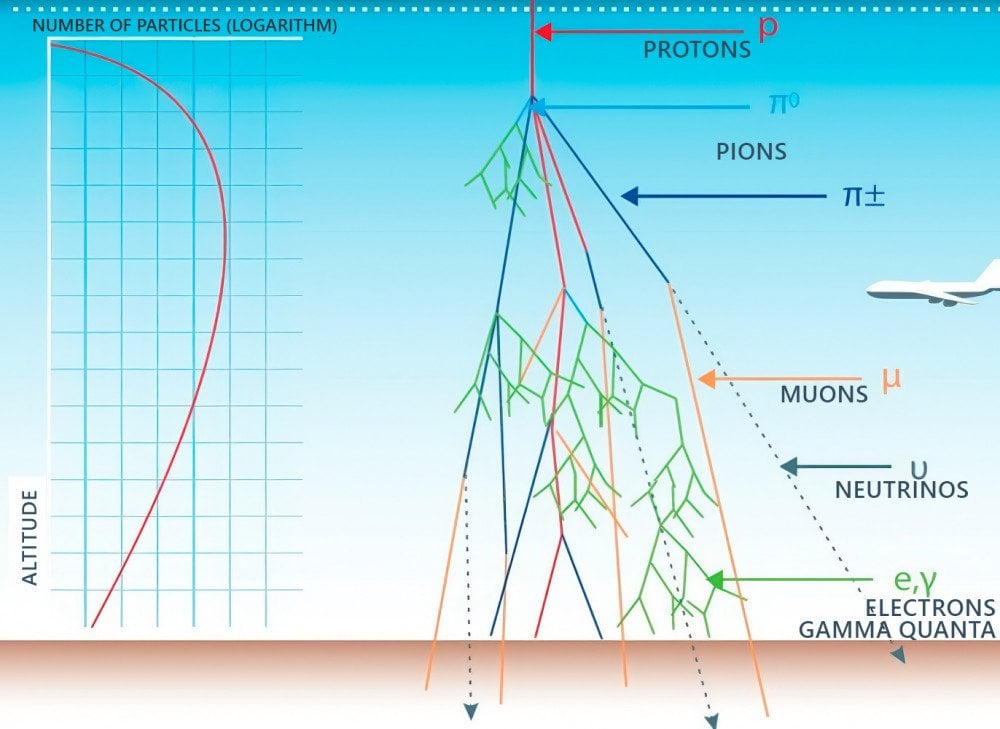
Figure 7. Schematic representation of the proton decay process into various particles and the formation of a shower of secondary particles. The diagram indicates with arrows the daughter particles to which protons can decay. These particles can vary from leptons (such as electrons) to mesons and baryons.
Only two types of particles are known to penetrate beneath the Earth's surface: muons and neutrinos. Muons penetrate hundreds of meters deep before being deflected, slowed down, and decayed into an electron and a neutrino. However, muons do not reach the Earth's core.
Neutrinos are the only known particles from space that can reach the Earth's core. High-energy neutrinos have a high probability of interacting with the Earth's interior. However, their flux is not large enough to transfer sufficient energy to the Earth's core to cause observable changes.
Low-energy neutrinos typically pass through the Earth without interacting with matter (Figure 8).
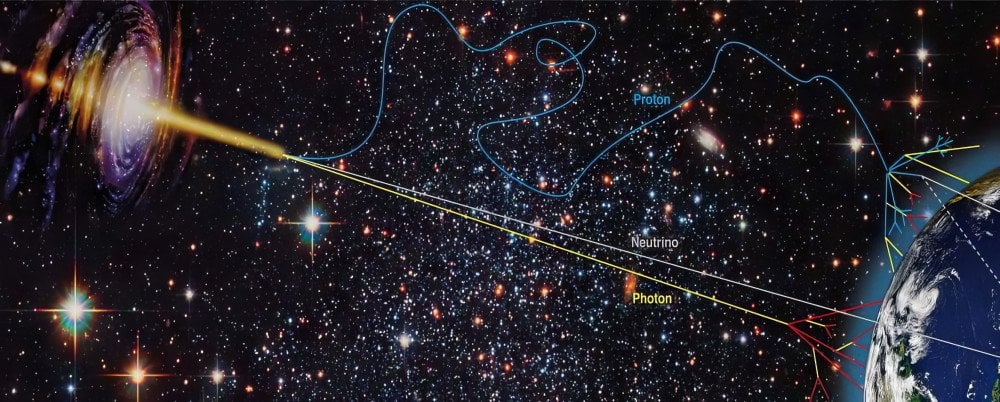
Figure 8. Neutrinos – perfect messengers in the Universe. (Image source) Irene Tamborra
Let's summarize. The analysis of scenarios of various known physical phenomena indicates that none of them — gravitational, electromagnetic, acoustic, cosmic rays, or dark matter — can directly impact the planet's core and cause the cyclic changes observed throughout the Solar System.
Currently, we have indirect evidence of cosmic influence, but equipment is needed for its measurement. As an analogy, consider searching for the cause of an illness at the microscopic level: we cannot always find it because we are not aware of all existing viruses and fungi. This implies the need to continue the search at the micro level to find the cause of the diseases.
The current situation can be described as a global pandemic in our Solar System, where all planets are subjected to the external cosmic influence. Changes are even observed on gas giants, where nuclear reactions are constantly occurring. This significantly narrows down the search area for understanding the sources of external cosmic influence, indicating the necessity for research at the microcosmic level.
Here, we encounter another type of physics, the hypothesis of which can be seen in the section “What is cosmic influence.” If scientists could conduct direct measurements in the core, they would use an exclusion method similar to dose monitoring in a nuclear reactor. However, we do not have direct access to the core. Therefore, at the moment, the flow of neutrinos from the neutron core could provide additional information about the processes occurring in the core.
To prevent catastrophic events on Earth, the best minds of humanity need to unite, and the necessary conditions must be created to solve this complex task — studying and protecting the Earth from the external cosmic influence.
References:
Arushanov, M. L. (2023).Dinamika klimata. Kosmicheskie faktory[Climate dynamics. Cosmic factors]. Hamburg: LAMBERT Academic Publishing. (p. 33).
Brown, S. K. et al. (2014). Characterisation of the Quaternary eruption record: Analysis of the Large Magnitude Explosive Volcanic Eruptions (LaMEVE) database.Journal of Applied Volcanology, 3, 5. https://doi.org/10.1186/2191-5040-3-5
Bryson, R. A. (1989). Late quaternary volcanic modulation of Milankovitch climate forcing.Theoretical and Applied Climatology 39, 115–125. https://doi.org/10.1007/bf00868307
Viterito, A. (2022). 1995: An important inflection point in recent geophysical history.International Journal of Environmental Sciences & Natural Resources, 29,556271. https://doi.org/10.19080/ijesnr.2022.29.556271
Barkin, Yu. V., & Smolkov, G. Ya. (2013).Skachkoobraznye izmeneniya trendov geodinamicheskikh i geofizicheskikh yavleniy v 1997-1998 gg. [Jump-like changes in trends of geodynamic and geophysical phenomena in 1997-1998]. Proceedings of the All-Russian Conference on Solar-Terrestrial Physics Dedicated to the 100th Anniversary of the Birth of Corresponding Member of the Russian Academy of Sciences V. E. Stepanov (pp. 16–21, September 2013, Irkutsk). Irkutsk, Russia.
Bertone, G. & Hooper, D. (2018). History of dark matter.Reviews of Modern Physics, 90 (4), 045002. https://doi.org/10.1103/RevModPhys.90.045002
Leave a comment